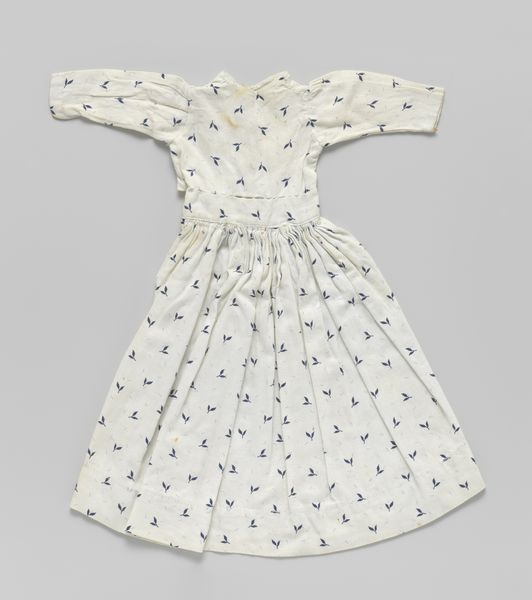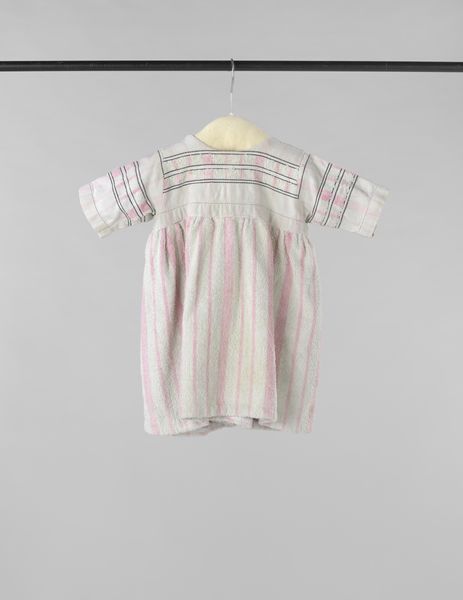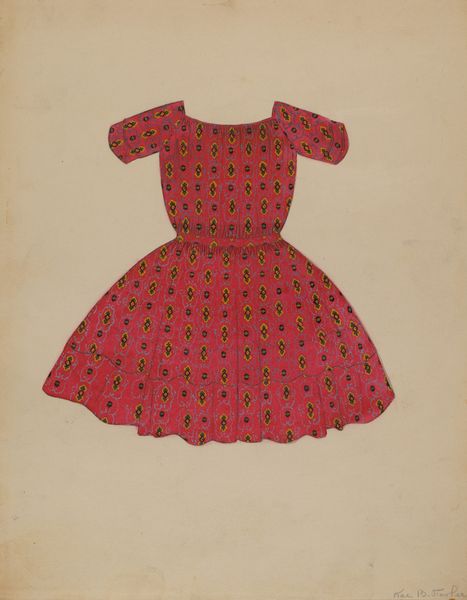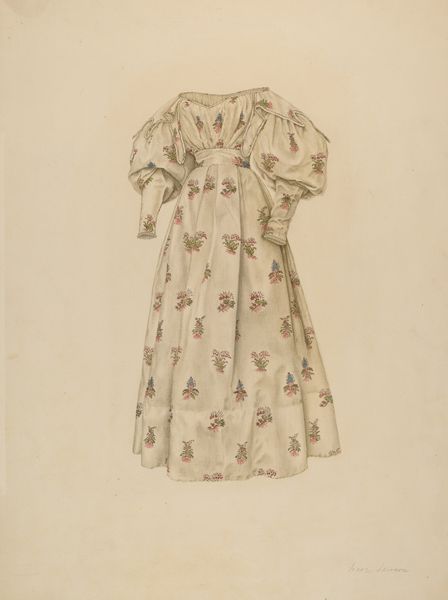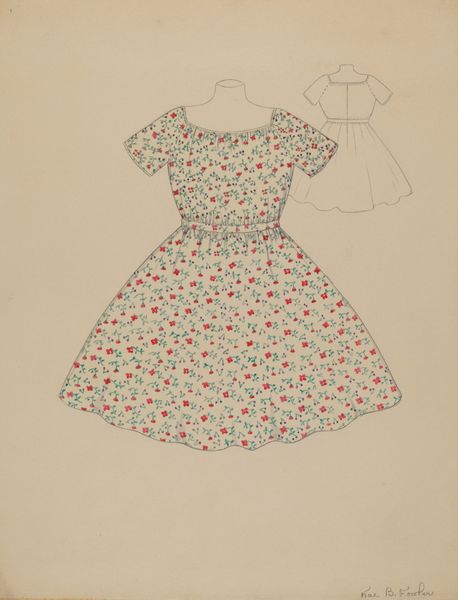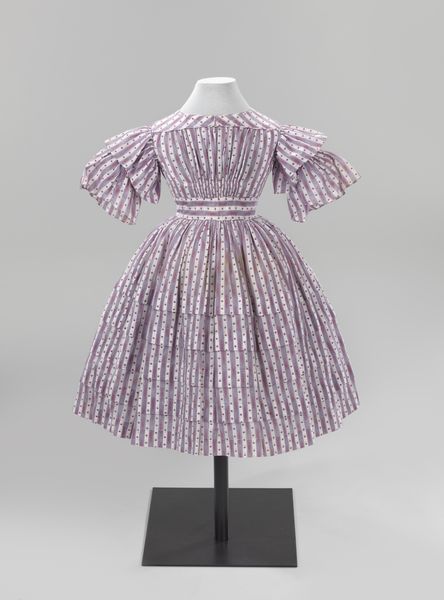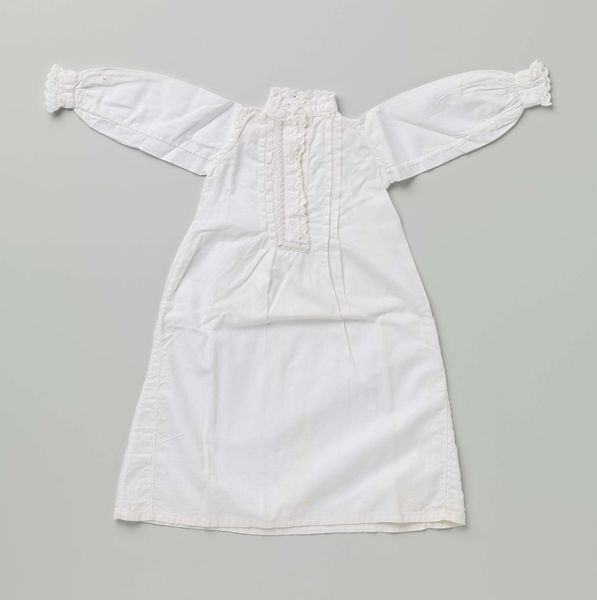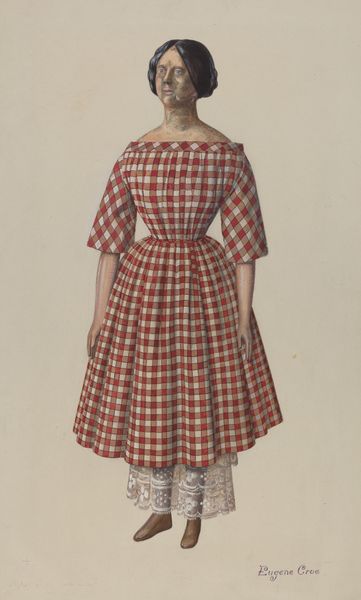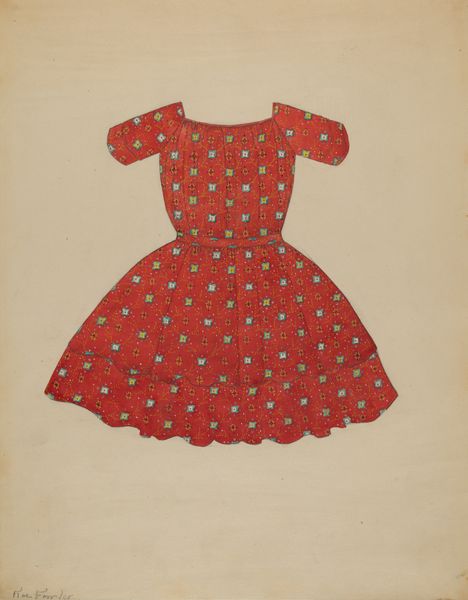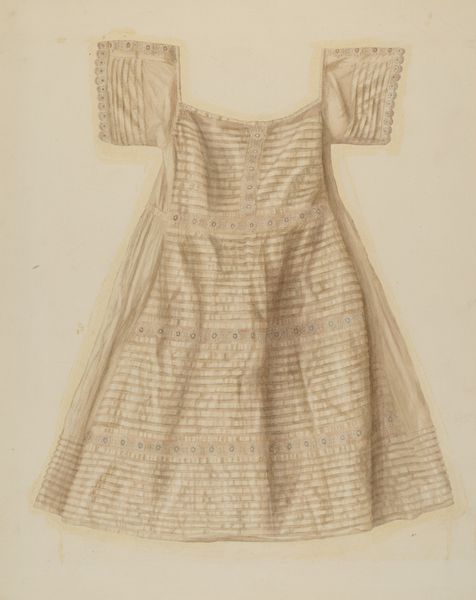
Jurk van geruite katoen met daarop vastgenaaid schort; alles geborduurd met bloemen c. 1910
0:00
0:00
fibre-art, textile
#
underwear fashion design
#
fibre-art
#
folk-art
#
fashion mockup
#
fashion merchandise
#
textile
#
clothing promotion photography
#
fashion and textile design
#
clothing photography
#
folk-art
#
clothing photo
#
textile design
#
decorative-art
#
imprinted textile
#
clothing design
Copyright: Rijks Museum: Open Domain
Curator: It has such a delicate air. A plaid cotton dress with a sewn-on apron, embroidered with flowers. What a simple charm! Editor: Charm indeed, but I also see something about the restricted roles often prescribed to young girls in the early 20th century, circa 1910, when P. Titjen-Baas created this piece. The folk art floral motif seems at odds with the severe check print; the two combined represent the conflicting roles of the individual versus the demands of culture. Curator: Interesting perspective! For me, the flowers whisper of renewal and nature's resilience. Perhaps even the hope woven into domesticity itself. Notice how the embroidery isn't perfect. Imperfection is often the space to explore individuality within community standards and traditional skills. Editor: But whose individuality? Likely, a young girl wouldn’t have created the design herself, or even stitched it. I wonder who poured their creativity into making it, and how does the garment fit within labor and class dynamics? Consider the access to education and leisure. Curator: You highlight fascinating layers! However, isn't there something simply evocative in the very tactility of it? Cotton, textile, and fiber art: the work carries the resonance of human hands performing tasks connected to survival. These very materials remind us about folk-art, of domesticity made aesthetic, of symbols embedded in material life. Editor: True. We cannot divorce any aesthetic from its materiality. But folk art rarely originates outside an exploitative dynamic. How can folk practices resist marginalization, if they don’t critique structural power imbalances? And is prettiness enough in this historical context? The garment material alludes to themes like child labor and textile industries and also reflects how our consumer habits are deeply entwined with economic injustices across global supply chains. Curator: It seems, at once a symbol of its time, burdened by context and expectation, but also an eternal statement about craft and creative spirit that has meaning outside historical strictures. Editor: Absolutely. By connecting the material reality to the world the creator inhabited and how our current experiences mirror such exploitative situations, we can deepen our appreciation for artistic acts that seek to subvert social norms and build alliances through critical reflections and practices.
Comments
No comments
Be the first to comment and join the conversation on the ultimate creative platform.
